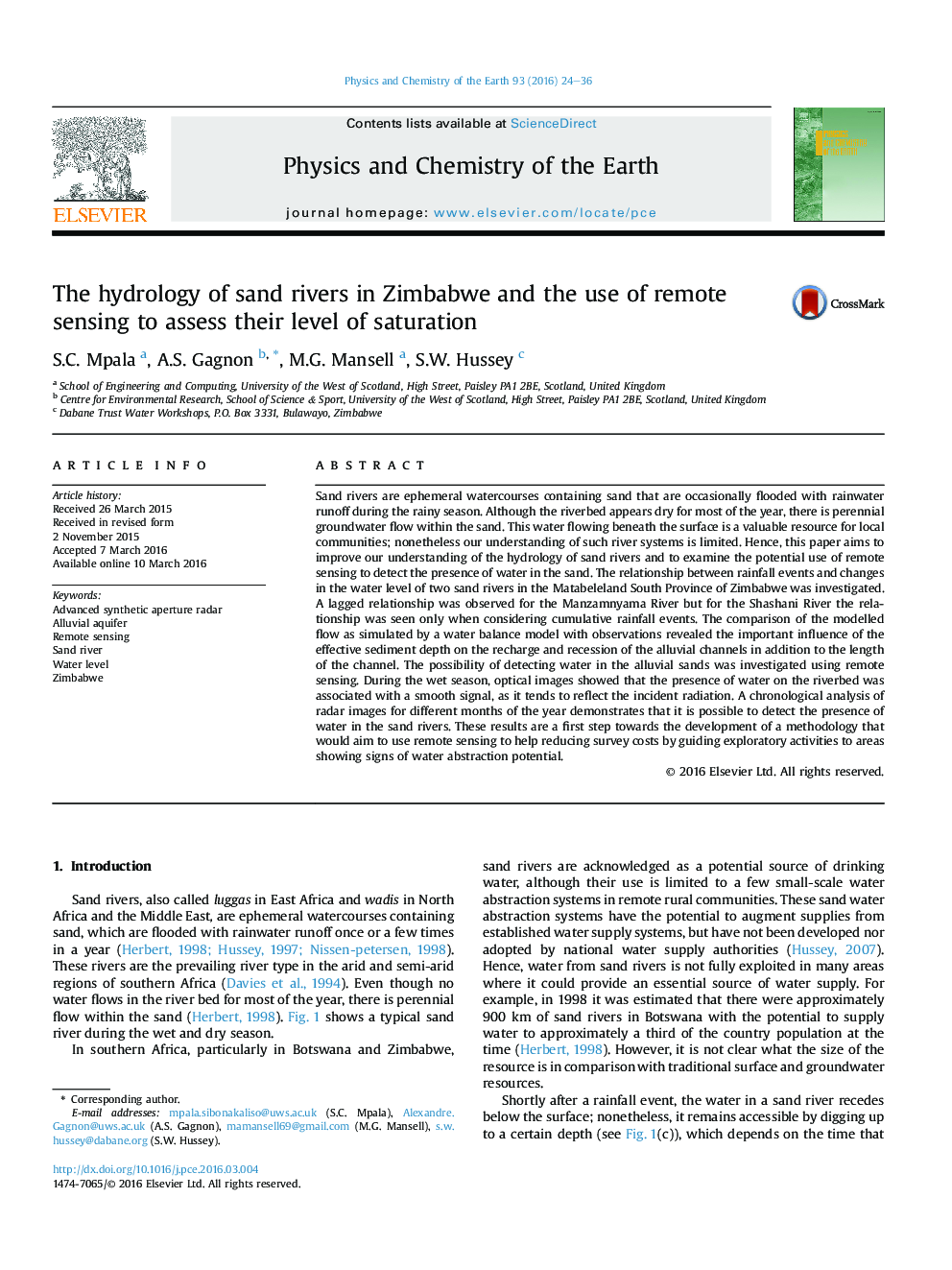| Article ID | Journal | Published Year | Pages | File Type |
|---|---|---|---|---|
| 4720800 | Physics and Chemistry of the Earth, Parts A/B/C | 2016 | 13 Pages |
•We investigate the influence of rainfall on the alluvial channels•Important influence of the effective sediment depth and channel length on alluvial flow•We investigate detection of water bearing sand rivers from satellite images.•Landsat optical images showed alluvium extent and channel flooding and drying.•There is potential to detect water bearing alluvial channels using ASAR images.
Sand rivers are ephemeral watercourses containing sand that are occasionally flooded with rainwater runoff during the rainy season. Although the riverbed appears dry for most of the year, there is perennial groundwater flow within the sand. This water flowing beneath the surface is a valuable resource for local communities; nonetheless our understanding of such river systems is limited. Hence, this paper aims to improve our understanding of the hydrology of sand rivers and to examine the potential use of remote sensing to detect the presence of water in the sand. The relationship between rainfall events and changes in the water level of two sand rivers in the Matabeleland South Province of Zimbabwe was investigated. A lagged relationship was observed for the Manzamnyama River but for the Shashani River the relationship was seen only when considering cumulative rainfall events. The comparison of the modelled flow as simulated by a water balance model with observations revealed the important influence of the effective sediment depth on the recharge and recession of the alluvial channels in addition to the length of the channel. The possibility of detecting water in the alluvial sands was investigated using remote sensing. During the wet season, optical images showed that the presence of water on the riverbed was associated with a smooth signal, as it tends to reflect the incident radiation. A chronological analysis of radar images for different months of the year demonstrates that it is possible to detect the presence of water in the sand rivers. These results are a first step towards the development of a methodology that would aim to use remote sensing to help reducing survey costs by guiding exploratory activities to areas showing signs of water abstraction potential.
